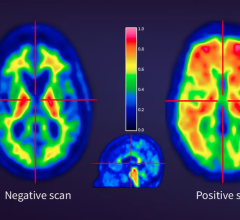
June 15, 2022 — Patients with severe obstructive sleep apnea (OSA) are less able to increase blood flow to the heart when needed, according to a first-of-its-kind PET imaging study presented at the Society of Nuclear Medicine and Molecular Imaging 2022 Annual Meeting. These findings suggest that cardiac PET imaging—which is used to assess blood flow to the heart—may be helpful in identifying OSA patients who are at high risk of heart disease and its complications.
The association between OSA and cardiovascular disease is well documented. In this study, researchers sought to specifically examine the association between the markers of OSA severity and coronary microvascular disease, which is a precursor to several cardiovascular diseases.
Three hundred and forty-six patients underwent diagnostic overnight sleep study and cardiac PET imaging. During the sleep study, obstructive features were categorized into three major groups: mild or no OSA, moderate OSA, or severe OSA. Hypoxia (low levels of oxygen in tissues) severity and clinical symptoms of sleepiness were also recorded. Cardiac PET imaging, which measures myocardial blood flow reserve, was performed to identify coronary microvascular disease. Analyses were conducted to compute the odds ratio of abnormal myocardial blood flow reserve for each of the OSA severity categories.
The frequency of abnormal myocardial blood flow reserve increased with worsening OSA; patients with severe OSA had more than twice the chances of having heart blood flow impairment as those with mild, moderate, or no OSA. There was no association between hypoxia severity or sleepiness and myocardial blood flow reserve.
“Interestingly, the significant relationship between OSA severity and myocardial blood flow reserve persisted among those with normal heart PET perfusion scans and no prior history of coronary artery disease,” said Ehimen Aneni, MD, MPH, an instructor at the Yale School of Medicine in New Haven, Connecticut. “The findings of this study may begin to explain why people with obstructive sleep apnea develop heart disease, including heart failure.”
He continued, “Future studies should focus on the role of myocardial blood flow reserve in risk stratification and prognosis of OSA, as well as on the impact of OSA-specific therapy on myocardial blood flow reserve.”
For more information: www.snmmi.org
Find more SNMMI22 coverage here
Snoring Poses Greater Cardiac Risk to Women
MRI Used to Demystify Cardiovascular Consequences of Obstructive Sleep Apnea


 November 18, 2025
November 18, 2025 









